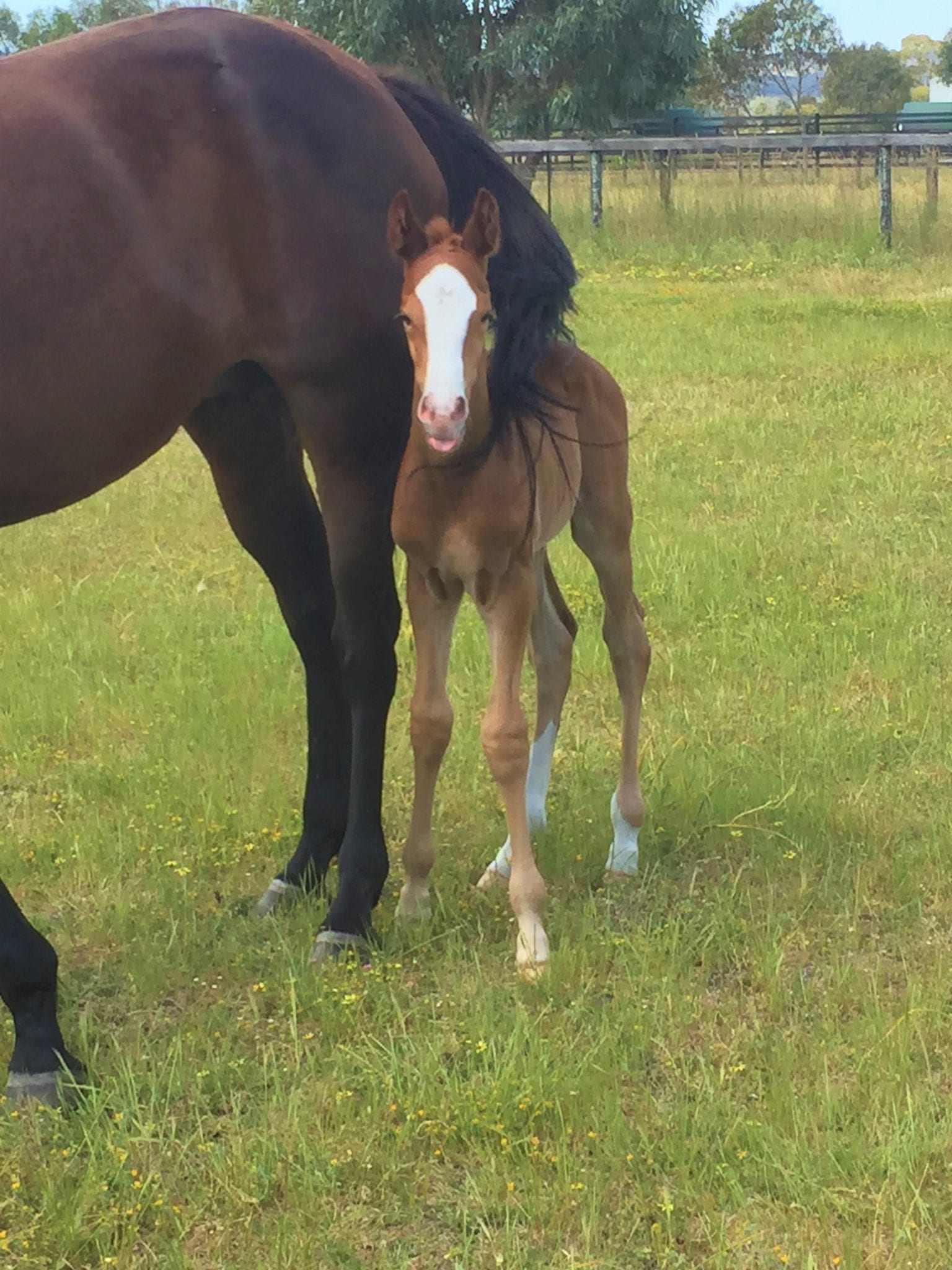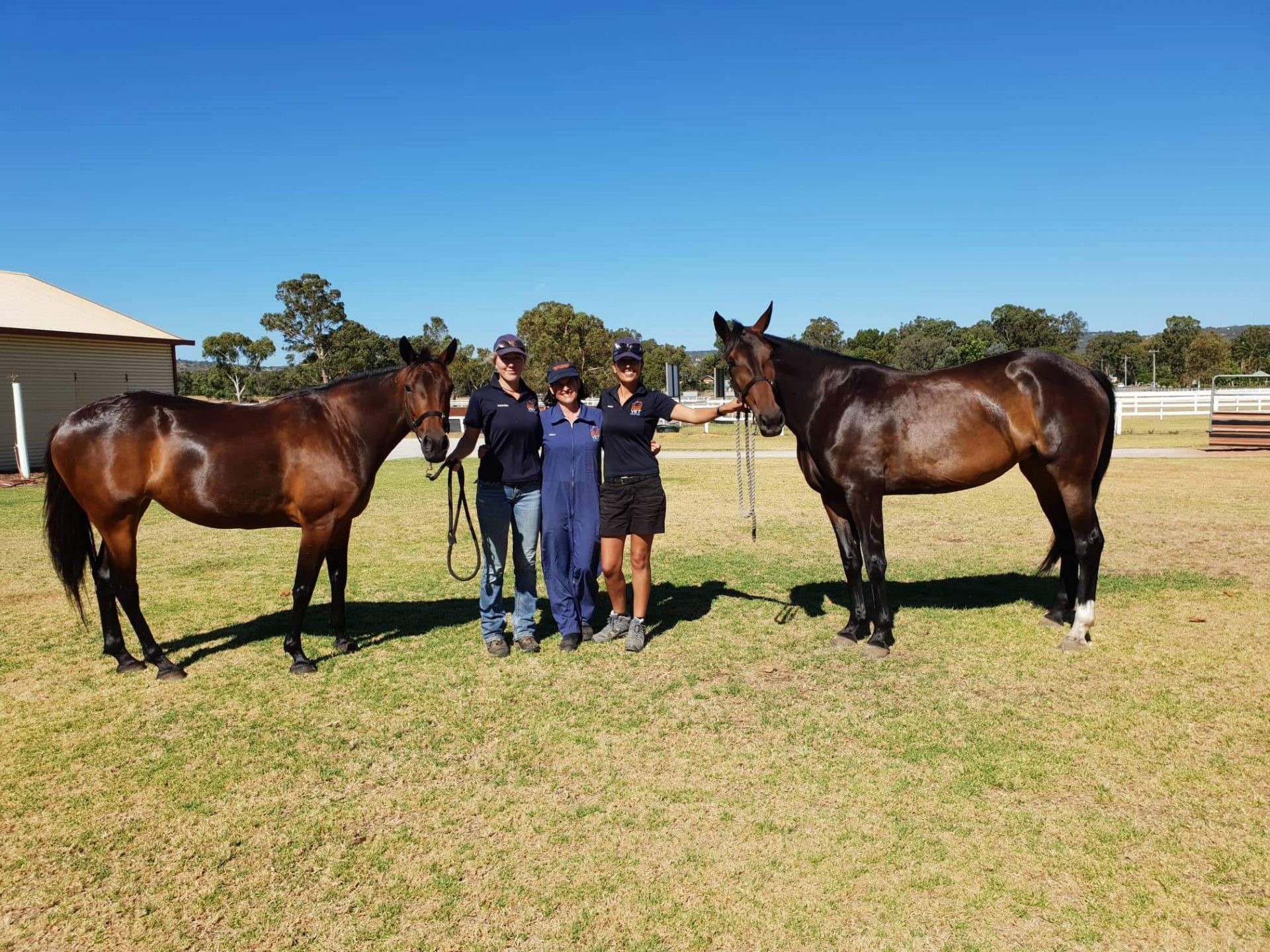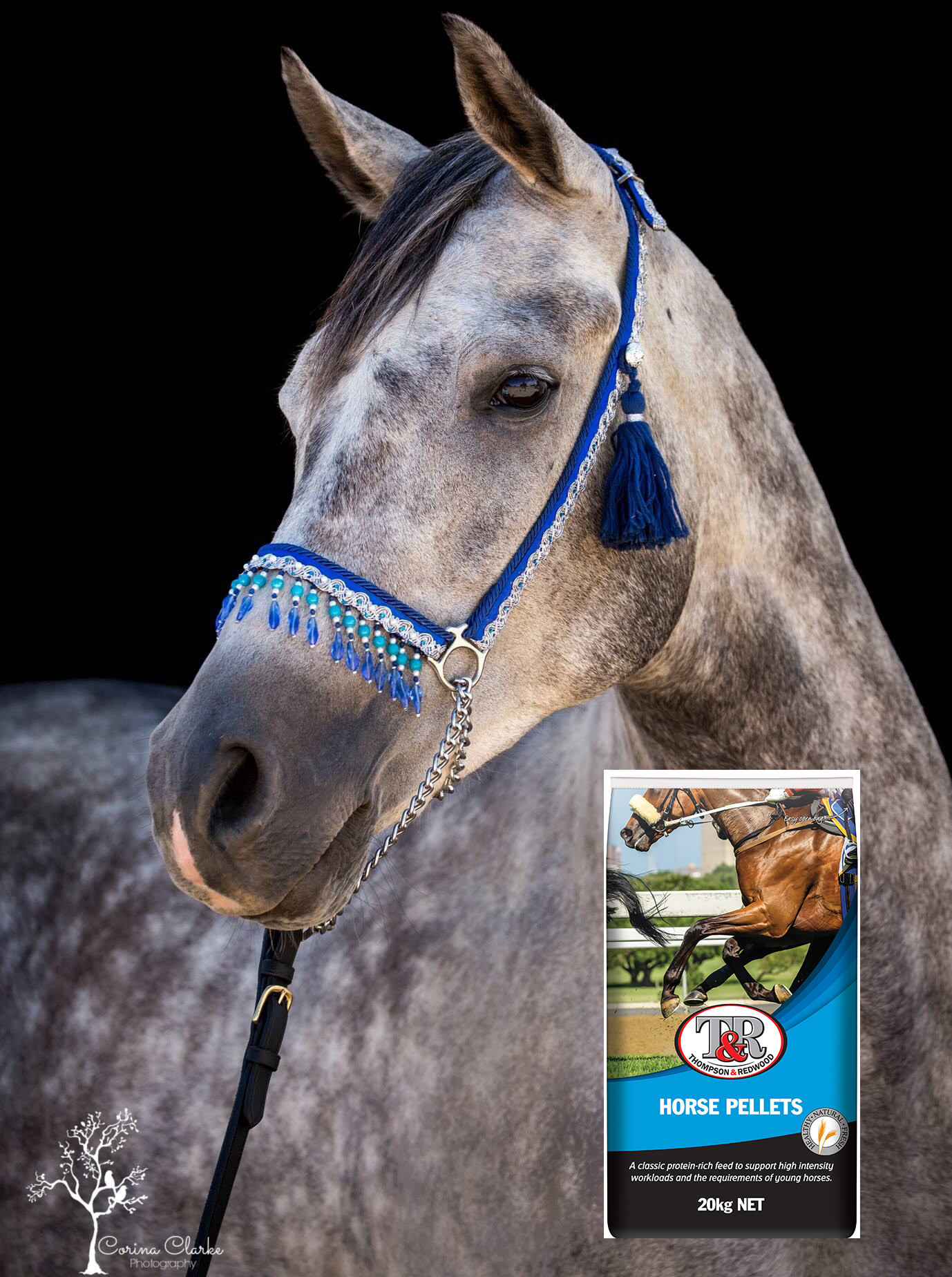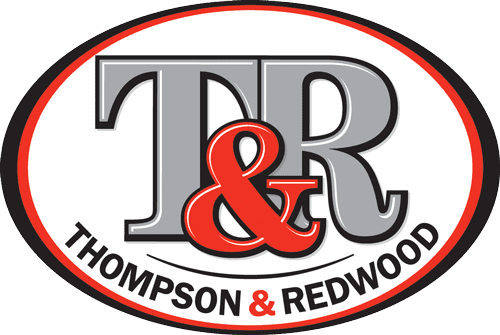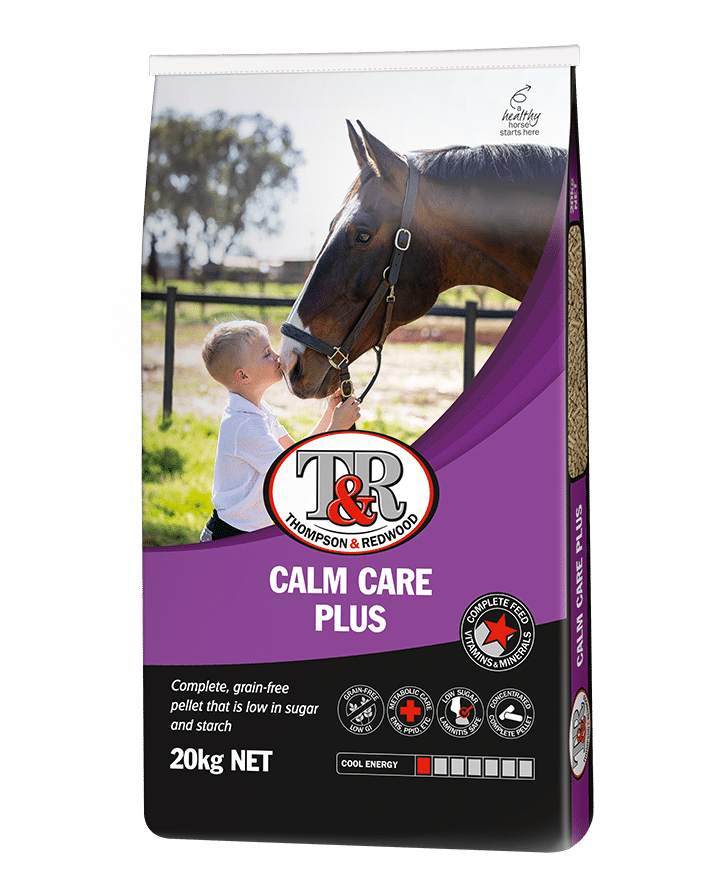
From grass roots to high performance, we have an equine feed to suit
A feed for (almost) every animal on the farm
Quality
Ruminant feeds to support productivity
We’re passionate about poultry
superior feed for broodmares, young stock & commercial studs
with added pre & probiotics
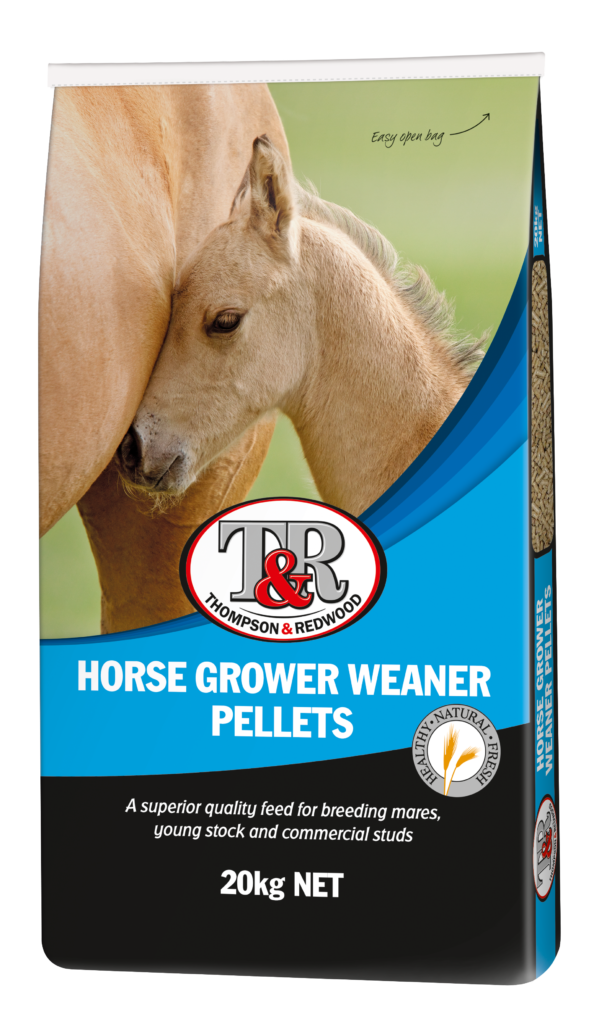
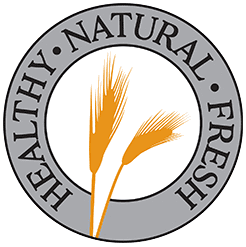
Making healthy, natural and fresh stock feed since 1985
Thompson & Redwood makes affordable and nutritionally balanced stock feed for the horse and agricultural
industries. Our recipes never change and are milled daily from Western Australian grain so you know what
you’re feeding is healthy, natural and fresh.
What's your
horse feeding challenge?
- Fizzy horse?
- Poor keeper?
- At risk of laminitis?
![]() Let our veterinary and nutrition team support you and your horse with our carefully formulated complete horse feeds.
Let our veterinary and nutrition team support you and your horse with our carefully formulated complete horse feeds.
Find the feed most suited to your horse or pony.
What's your
horse feeding challenge?
- Fizzy horse?
- Poor keeper?
- At risk of laminitis?
![]() Let our veterinary team support you and your horse with our carefully formulated complete horse feeds.
Let our veterinary team support you and your horse with our carefully formulated complete horse feeds.
Find the feed most suited to your horse or pony.
𝗡𝗦𝗖 - 𝗡𝗼𝗻-𝗦𝘁𝗿𝘂𝗰𝘁𝘂𝗿𝗮𝗹 𝗖𝗮𝗿𝗯𝗼𝗵𝘆𝗱𝗿𝗮𝘁𝗲𝘀, 𝘄𝗵𝗮𝘁 𝗮𝗿𝗲 𝘁𝗵𝗲𝘆 𝗮𝗻𝗱 𝘄𝗵𝘆 𝗱𝗼 𝘁𝗵𝗲𝘆 𝗺𝗮𝘁𝘁𝗲𝗿?
You`ve probably heard us talk about NSC in feed, hay, fibres and pastures, but have you ever wondered what we actually mean?
❓What are NSC?
Non-Structural Carbohydrates are all of the carbohydrates in a plant cell that are not part of the cell wall, which includes sugars, starch and fructans. They are a vital source of energy for the plant, used for its growth and function. NSC levels can be calculated by adding the Water-Soluble Carbohydrate level of a feed (WSC=simple sugars+fructans) to its starch level.
❓What are NSC in?
Because they`re part of a plant, NSC are in almost all of the plant materials we feed our horses, including, hay, pasture, grains, fibres and molasses. The NSC level can vary greatly depending on a range of factors including:
- Type of plant or grain
- Maturity of the plant
- The part of the plant or grain that is used
- If the plant as stressed or not
- How an ingredient has been processed or treated when used in a feed
- Even the time of day for pastures!
❓Why do we measure NSC values?
NSC are a quick energy source for horses, and they`re easily digested and absorbed in the small intestine. As starches and sugars are digested, enzymes break them down into glucose. Once glucose enters the bloodstream, the pancreas releases insulin to help move glucose into cells for energy.
But if too much glucose enters the bloodstream — particularly from a diet high in NSC — it can overload the system. Over time, the body’s cells may become less responsive to insulin, leading to insulin resistance.
💡Think of it like your emails. If you get a few daily you can read each one, but if you get overloaded with junk, you stop reading them and soon they just go straight to your junkmail.
This becomes a serious issue in horses with metabolic conditions like Equine Metabolic Syndrome (EMS), PPID (Cushing’s), or those prone to laminitis, where even moderate spikes in blood glucose and insulin can be dangerous.
Jul 15

Tech People: AI is getting so smart!
Horse people: is it though?
Did you know that we are a NO AI ZONE? What you see on our website, marketing and social media is created and run only by humans, and knowledgeable horsey humans at that! We don`t use AI to generate posts, content, images, graphics, articles or blog posts.
Why? Because our customers are real people, so we are keeping it real for you.
#fridayfunny - thanks to Lynne from ShiteDressageUnited for sharing this image.
Jul 11

When they`re looking after a special little person with big dreams, they need to be calm, careful and healthy.
We have the feeds to fuel them on this job of a lifetime.
Junior members of our team, Ocean and `Cruise` make a great partnership and are a joy to watch.
#horsefeed #fuelledbytandr @tui_rei @lyla_creative
Jul 9

⚠️ARGT - What is it, and why hay testing is essential!
Unfortunately, there have been a number of horses impacted by Annual Ryegrass Toxicity (or ARGT) this year. Understanding what ARGT is and where it comes from is vital for WA horse owners to manage the risks.
𝗪𝗵𝗮𝘁 𝗶𝘀 𝗔𝗥𝗚𝗧?
ARGT is a very serious condition that occurs when a horses and livestock consume Annual Ryegrass that is infected by the Rathayibacter toxicus bacteria. The problem isn’t caused by the ryegrass itself but the nasty toxin that’s produced as a result of the infection.
𝗛𝗼𝘄 𝗱𝗼𝗲𝘀 𝘁𝗵𝗲 𝗴𝗿𝗮𝘀𝘀 𝗯𝗲𝗰𝗼𝗺𝗲 𝗶𝗻𝗳𝗲𝗰𝘁𝗲𝗱?
The bacteria hitch a ride with tiny nematodes (a type of worm) which target and takeover the young, growing flowers and seedheads, replacing them with galls. The bacteria can be introduced to a paddock by the nematodes, or it may be present already in the soil.
The galls are the perfect environment for the bacteria, which then multiply and produce a toxin (corynetoxin) within the seedhead, which is transferred to the animal when eaten.
Unfortunately, ryegrass that has been infected will remain toxic even after the grass has dried off and been cut, meaning that hay cut from it will be toxic too.
𝗛𝗼𝘄 𝗱𝗼𝗲𝘀 𝘁𝗵𝗲 𝗮𝗻𝗶𝗺𝗮𝗹 𝗯𝗲𝗰𝗼𝗺𝗲 𝗶𝗻𝗳𝗲𝗰𝘁𝗲𝗱?
Any grazing animals, from horses through to sheep and even pigs are susceptible to ARGT, when they eat infected pasture or hay.
The toxins have a cumulative effect. This means that the more the animal eats, the more it will affect them. Even if they have breaks between consumption for up to 9 weeks, the toxin can still accumulate.
Clinical signs of ARGT can show as early as 4 days post-introduction to infected feed but can also take weeks to develop.
𝗪𝗵𝗮𝘁 𝗮𝗿𝗲 𝘁𝗵𝗲 𝘀𝘆𝗺𝗽𝘁𝗼𝗺𝘀?
The toxin that causes ARGT impacts the central nervous system, and symptoms can be quite severe and quick to show. Symptoms include:
➡️ Staggering or wobbling
➡️Disoriented
➡️Muscle tremors
➡️Seizures
➡️Hyper-reactivity
➡️Sudden death
Cont ⬇️⬇️⬇️
Jul 8

Are you looking for a cool feed that supports eventing performance?
Calm Care Plus is a cool source of calories to support the needs of performance horses, from grass roots to an elite level.
We`ve packed it full of nutrients to make a complete feed that not only meets their daily requirements, but contains added extras that optimise their health, function and performance, including:
✅ Added magnesium for muscle function and reducing tension
✅ Pre & probiotics for gut health when travelling and competing regularly
✅ Additional amino acids lysine, methionine and threonine for topline building
✅ Antioxidants and Vitamin C to support recovery, health and immune function
✅ Grain-free and grain by-product formula is safe for horses with ulcers and gastric issues
✅ Highly concentrated formula supports a lower feeding rate
Plus, it`s locally owned and made!
Jul 6

❗ HEALTH ALERT: Sand Colic ❗
There have been quite a few cases of sand colic popping up recently, and our conditions this season aren`t helping. Find out more about sand colic, diagnosis and some day-to-day management strategies to help prevent it ⬇
🐎 What is Sand Colic? It is colic or abdominal pain caused by the ingestion of and presence of sand in a horse`s gut. While it can be normal for horses to have a bit of sand present in their gut, large amounts can cause trouble, and some horses may be more prone to sand colic. The early signs can include diarrhoea and abdominal pain (biting at stomach, pawing or rolling).
🐎 Horses can ingest sand when grazing or picking up feed off the ground. At the moment many paddocks have short grass or are bare leading to more sand exposure. Where there has been some rain and fresh green pick growing, it can encourage horses to eat the grass down closer to the ground than normal which can mean they pick up more sand.
⚠️If you are worried about your horse and their sand colic risk, talk to your local vet. Abdominal x-rays are the preferred method for sand burden diagnosis and are a non-invasive check that your vet can perform easily.
For day-today prevention:
✅ Avoid overgrazing pastures, especially short pastures under 6-8cm high. This is the `growth zone` where all the sweet bits are, so horses and ponies get close to the ground and are more likely to pick up sand and debris.
✅ Keep water filled, clean and fresh to avoid dehydration.
✅ Feed quality hay to supplement shorter pastures. They need 1.5-2% of their body weight in fibre daily. Plenty of quality hay helps keep their guts moving, and the fibres can help to pick up and move little particles of sand and grit too.
✅ Place rubber mats under feed buckets, so that if they do drop feed, they don`t pick it up directly off the ground.
✅ Try to avoid feeding hay directly off the ground to minimise sand intake.
Jun 30

🟣 Do you feed Calm Care Plus? We want to hear from you! Tell us about your horse or pony`s Calm Care Plus transformation to go into the draw to take home a 3-month`s supply* of Calm Care Plus!
TO ENTER: Head to our website and fill in the form with your horse or pony`s story with our team >>
https://thompsonandredwood.com.au/giveaway-win-a-3-months-supply-of-calm-care-plus
Entries close Friday 1 August 2025, and a prize winner will be chosen by our nutrition team. Winners will be notified via the email provided.
*Prize includes 9 x 20kg bags, or 3 months` supply for a 500kg horse in moderate work (nearly 6 months` supply for a pony being fed 1kg per day!)
⚠️ Please be aware of scammers. We will not send you friend requests, invite you to join a group or ask you to input any financial details.
Jun 30

"He may be dirty and fluffy, but my retired gelding is glowing! He`s got great topline and look at that shine ✨✨✨ He`s on Lupin Fibre Boost and pasture, that`s all! I`m so happy with the results, his gut is better, his coat is better (he used to get terrible itch) and he`s so much happier. Thanks for a great feed."
Lupin Fibre Boost is so versatile, you can use it on its own, to boost pastures and even to balance out and top up other feeds to meet your horse`s daily requirements.
#lupinfibreboost #boost #seniorhorse #horsefeed #horsenutrition #tandrglow #fuelledbytandr
Jun 26

NEW PARTNERSHIP - we are so excited to join Off the Track WA as a supporter of their rehoming program and Herd Heroes initiatives.
Horses that are purchased through the program will receive a welcome pack to help them in their life after racing, and we`ve packed it full of goodies!
It includes:
✅ A handy drawstring gear bag, great for storage or packing things for events and competitions.
✅ A gift voucher for 2 x 20kg bags of T&R equine feed
✅ 2kg feed sample bags of Lupin Fibre Boost and Calm Care Plus
✅ A nutrition information booklet with handy tips on digestion and feeding for Off the Track horses
✅ Diet cards with suggested diets for Off the Track horses in various disciplines and stages of transition.
Our Herd Heroes initiative is for ex-racehorse owners who have an Off the Track Passport. You can sign up to our Herd Heroes membership area and receive an initial discount voucher on 2 x 20kg bags of feed, and then more discounts every 6 months. Join the program here: https://mailchi.mp/thompsonandredwood.com.au/tr-herd-hero-signup
Make sure you support Off the Track WA, and if you have an ex-racehorse, sign up for your Off the Track Passport.
Jun 25

⭐Get to know our Junior Ambassador Clara Dagostino - a young girl on a mission! ⭐
8-year-old Clara is from Oakford WA and has been riding since before she could walk. Clara loves competing in all disciplines including eventing, showjumping, pony club and show horse.
She is an active member of Wanneroo Horse and Pony Club where she thoroughly enjoys riding and learning with her friends. Clara has grown up at Oakford Equestrian Centre and loves being involved with the team environment at competitions.
Clara started by riding the school ponies, which gave her a fantastic confident start to her riding. She now has 3 main ponies of her own, and is currently competing Ted, Nia and Prinny - all regularly bringing home rugs and ribbons and all on a range of T&R products. Ted has EMS, and has been thriving on our Lupin Fibre mashes.
Her greatest achievements to date have been winning Capel, Harvey and Brigadoon CCN’s and qualifying for both EA and SHC Nationals and representing WA in Sydney.
We`ve been watching Clara`s journey for a while, and are proud to support her as a Junior Ambassador.
#teamtandr #teamthompsonandredwood #sponsoredrider #eventing #jumping #pony #horseriding #fuelledbytandr @bec_dagostino Mike Dagostino
Jun 23

Our new drawstring gear bags are coming in handy holding puppies...and kids! Thanks to sponsored rider Jodi for the great photos.
.
.
.
#teamtandr #ThompsonandRedwood
... See MoreSee Less


- likes love haha 14
- Shares: 1
- Comments: 4
4 CommentsComment on Facebook
𝗡𝗦𝗖 - 𝗡𝗼𝗻-𝗦𝘁𝗿𝘂𝗰𝘁𝘂𝗿𝗮𝗹 𝗖𝗮𝗿𝗯𝗼𝗵𝘆𝗱𝗿𝗮𝘁𝗲𝘀, 𝘄𝗵𝗮𝘁 𝗮𝗿𝗲 𝘁𝗵𝗲𝘆 𝗮𝗻𝗱 𝘄𝗵𝘆 𝗱𝗼 𝘁𝗵𝗲𝘆 𝗺𝗮𝘁𝘁𝗲𝗿?
You've probably heard us talk about NSC in feed, hay, fibres and pastures, but have you ever wondered what we actually mean?
❓What are NSC?
Non-Structural Carbohydrates are all of the carbohydrates in a plant cell that are not part of the cell wall, which includes sugars, starch and fructans. They are a vital source of energy for the plant, used for its growth and function. NSC levels can be calculated by adding the Water-Soluble Carbohydrate level of a feed (WSC=simple sugars+fructans) to its starch level.
❓What are NSC in?
Because they're part of a plant, NSC are in almost all of the plant materials we feed our horses, including, hay, pasture, grains, fibres and molasses. The NSC level can vary greatly depending on a range of factors including:
- Type of plant or grain
- Maturity of the plant
- The part of the plant or grain that is used
- If the plant as stressed or not
- How an ingredient has been processed or treated when used in a feed
- Even the time of day for pastures!
❓Why do we measure NSC values?
NSC are a quick energy source for horses, as the starches and sugars are easily digested and absorbed in the small intestine where enzymes break them down into glucose. Once glucose enters the bloodstream, the pancreas releases insulin to help move glucose into cells for energy.
But if too much glucose enters the bloodstream — particularly from a diet high in NSC — it can overload the system. Over time, the body’s cells may become less responsive to insulin, leading to insulin resistance.
💡Think of it like your emails. If you get a few daily you can read each one, but if you get overloaded with junk, you stop reading them and soon they just go straight to your junkmail.
This becomes a serious issue in horses with metabolic conditions like Equine Metabolic Syndrome (EMS), PPID (Cushing’s), or those prone to laminitis, where even moderate spikes in blood glucose and insulin can be dangerous.
Understanding and managing NSC intake is key to keeping these horses healthy — especially when their workload doesn't match their energy intake or their metabolism is already compromised.
❗REMEMBER:
All horses are different, and while not every horse will need a low-NSC diet, those that have metabolic issues and sensitivities should have their NSC levels managed very carefully across their pasture, hays and feeds.
If you're ever not sure about your horse's metabolic health, book them in for a check with your vet, then chat to our team about our range of ultra-low starch and sugar feeds that could help to support them.
... See MoreSee Less

0 CommentsComment on Facebook
Have you heard of the Pass Wide and Slow Awareness Ride? It's WA's first official ride and joins the global movement that aims to promote road safety for horses and riders. It's a peaceful, high-visibility ride that is supported by local authorities, business and the community.
WHAT: Pass Wide and Slow Awareness Ride – Western Australia
WHEN: Sunday, 14th September 2025
WHERE: Departs from State Equestrian Centre, Brigadoon
For more information and to get involved, check out the official event page below:
www.facebook.com/share/p/1ZfdLeYUbh/?mibextid=wwXIfr
... See MoreSee Less
This content isn't available right now
When this happens, it's usually because the owner only shared it with a small group of people, changed who can see it or it's been deleted.0 CommentsComment on Facebook
Tech People: AI is getting so smart!
Horse people: is it though?
Did you know that we are a NO AI ZONE? What you see on our website, marketing and social media is created and run only by humans, and knowledgeable horsey humans at that! We don't use AI to generate posts, content, images, graphics, articles or blog posts.
Why? Because our customers are real people, so we are keeping it real for you.
#fridayfunny - thanks to Lynne from ShiteDressageUnited for sharing this image.
... See MoreSee Less

2 CommentsComment on Facebook
Who likes FREE feed? You could take home a 3-months' supply of Calm Care Plus, just for sharing your Calm Care Plus story.
Enter here >> thompsonandredwood.com.au/giveaway-win-a-3-months-supply-of-calm-care-plus
... See MoreSee Less

0 CommentsComment on Facebook
